Whenever I try to explain what a digital audio converter (DAC) does and why it’s a cool thing to have, I almost always get that “deer in headlights” look. Then – if they’re still listening – I tell them the cost of this cool DAC. That’s when the look changes to “are you nuts?” Sheesh, sometimes you just can’t win. No matter, because I got to review the new – and cool – Cambridge Audio DacMagic XS USB DAC/Headphone Amp.
The DacMagic XS is exactly what the name implies: It’s an extra small version of CA’s line of full-sized DACs. DACs are designed to improve digital audio beyond the capabilities of a standard computer or CD player. All digital audio has to be converted to analog – which is what our ears hear. We can’t hear digital; soundwaves are analog. A good DAC will capture and convert as much as possible from the digital signal resulting in more accurate audio. That’s the theory, anyway. The reality is more complicated than that.
DACs – like anything else – can be really good or really … well, you get the picture. Unfortunately, most DACs on computer sound cards are in that latter catagory. Computer companies usually go with the cheapest components they can get away with. Since audio is so subjective, most people have no idea what they are missing by listening to their music through computer speakers. Sadly, many don’t even care, which is why it’s hard to explain why someone may (or may not) need or want one.
Here is a quick way to decide if you may even want a DAC or not: Do you use your laptop’s speakers, a Bluetooth speaker or a decent pair of stereo speakers? Do you have a good pair of headphones? By good, I mean at least $100. Is music important to you or is it just a soundtrack for your day? These are important things to consider when looking at DACs. Here’s my advice, pure and simple: If you’re happy with those free buds that came with your smart phone or a typical bluetooth speaker, save your money. On the other hand, it you’ve invested in a good pair of headphones, or use a nice set of speakers (wireless or not), then a DAC can certainly help.
That brings us to the Cambridge Audio DacMagic XS USB DAC/Headphone Amp. ironically, the name is bigger than the DAC itself. The DacMagic XS is both a digital audio converter and a headphone amp. While it looks nice, the cool factor is its portability. This thing is tiny. Plus, it’s powered by USB only. Connect one end to a laptop or computer and the other to headphones and that’s it. Dead simple.
While you can connect the DacMagic XS to a portable or powered speaker, I’m not convinced any improvement will be that dramatic. Headphones though are something else. I’ve said this before, but it bears repeating: You may not notice any OMG! moment after connecting a DAC to headphones. However, give it a few days and then unplug the DAC. The downgrade in audio will not be pleasant. It’s like wine. Once you’re introduced to the good stuff, it’s hard to go back to the gallon jug with the screw-top.
So what can you expect with the DacMagic XS? First, there will be a wider range in volume. That’s what the amp does. You will be able to turn up the volume without distortion creeping in. Also, you will be able to turn the volume down, yet still hear detail.
The DAC part lets you hear more musical information that can easily be lost relying on cheap computer sound cards. Plus there will be more clarity in the music. You may notice subtleties missed before. This can be really fun with songs you may be intimately familiar with. I especially notice the improvements in the Beatles 2009 remasters. An example would be Paul McCartney’s bass playing. It was virtually lost or buried on older recordings. The DacMagic XS lets you hear just how good McCartney’s bass playing was. It is breathtaking.
Note that in testing the DacMagic XS, I used various quality headphones and earphones. I don’t do buds.
Although the DacMagic XS is small, it’s a solid piece of engineering. The all aluminum body is brushed black with a chiseled edge that joins with the front and back plates. The unit is almost seamless with extremely tight tolerances. There is a single, tiny LED bulb that changes color depending on what sampling rate any particular song is: – blue is 44.1/48kHz, green is 88.2/96kHz and purple is 176.4/192kHz – and flashes red when the volume limit is reached.
The top of the DacMagic XS has only two oversized plus and minus volume buttons. That’s it. It turns on the moment it’s connected. While the buttons are convenient, the DacMagic XS overrides the native volume button on my iMac. I don’t like that, because I instinctively reach for Mac volume and not the DacMagic XS. It’s a learning curve that hasn’t sunk in yet.
Another thing that bothers me is the short USB cord. It’s 7” long including the USB connectors. That’s almost perfect for a laptop, but the DacMagic XS dangles in air when connected to my iMac, requiring me to use an old Apple USB extension that I had in a drawer. While I’m sure it was designed primarily for laptops, not everyone (like me) uses one. An extra, longer cord would have been nice. Also included is a silk-like drawstring bag to help keep the DacMagic XS dust free when stored.
There are no funky settings to mess with on a mac, but you do have to choose the DacMagic XS in the sound preferences output setting. It won’t be recognized immediately, but my iMac remembers the setting when I re-connect it. Windows users should have similar ease of use.
One example of how the DacMagic XS improves audio is the grating, but fascinating song “Fear” by John Cale from the album of the same name. Pounding piano overlaid on slightly out-of-tune bass and weirded-out guitar evokes a paranoia that this song is all about. The DacMagic XS lets the urgency in Cale’s vocals punch through as he yells, “Say, Fear is a man’s best friend!” above the instrumental mayhem playing out around him.
As the classic Santana album, “Abraxas,” opens with “Singing Winds, Crying Beasts,” you can hear studio noises clearly in the background, such as paper shuffling and squeaky chairs. It lets you feel like you are sitting in on a session. The DacMagic XS brings out hidden detail that was not noticeable before. Discovering things in favorite songs is always fun.
Even classical pieces fare better with the DacMagic XS. “By the Beautiful Blue Danube Waltz, Op. 314” (you may not know the title, but you’ve heard it) by the National Philharmonic Orchestra is a glorious piece of music that makes you want to dance. There is subtle flute work among the strings that can easily disappear. The DacMagic XS lets it come through revealing yet another layer to this already multi-layered piece.
Note: Once again, remember to use a good set of headphones in order to fully experience the DacMagic XS. That is what it’s made for.
The DacMagic XS lets you feel your music more. I know – that’s a nebulous statement that can’t be quantified. By feel, I mean that favorite songs become more intimate, involving and more focused with the DacMagic XS. The same songs may sound OK when relying on my iMac alone, but why settle for OK, when you can have really, really good?
For more info visit http://www.cambridgeaudio.com/products/dacmagic-xs-usb-dac-headphone-amp
PROZOR 192KHz Digital to Analog Audio Converter DAC Digital SPDIF Optical to Analog L/R RCA Converter, Toslink Optical to 3.5mm Jack Adapter for PS3 HD DVD PS4 Amp Apple TV Home Cinema
18% OffFosi Audio K5 Pro Gaming DAC Headphone Amplifier Mini Hi-Fi Stereo Digital-to-Analog Audio Converter USB Type C/Optical/Coaxial to RCA/3.5MM AUX for PS5/PC/MAC/Computer
11% OffProduct Information
| Price: | $189.99 US |
| Manufacturer: | Cambridge Audio |
| Pros: |
|
| Cons: |
|

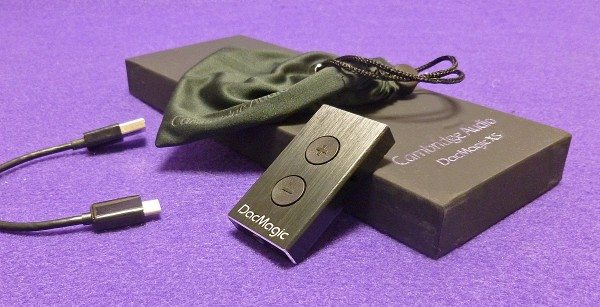
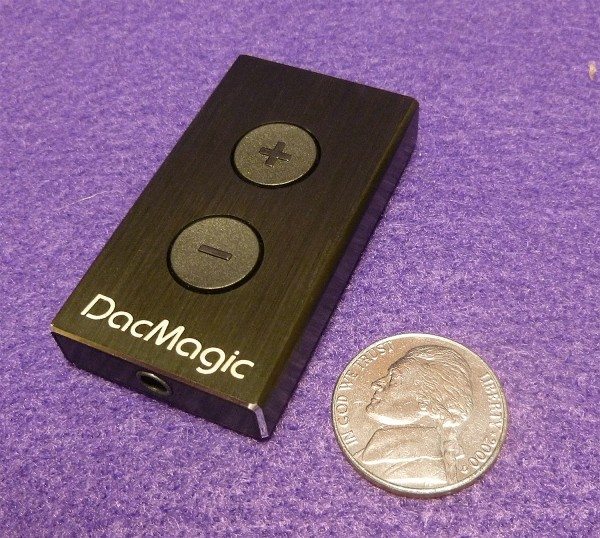
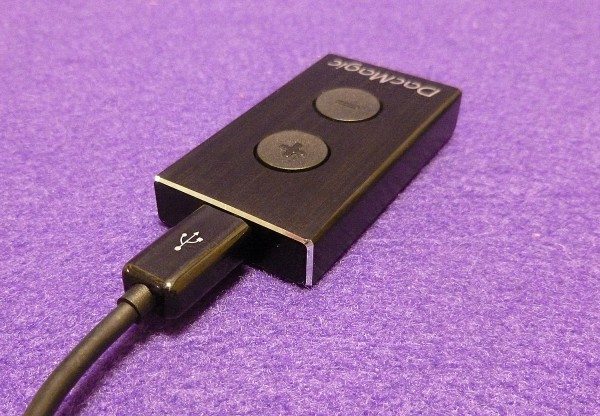
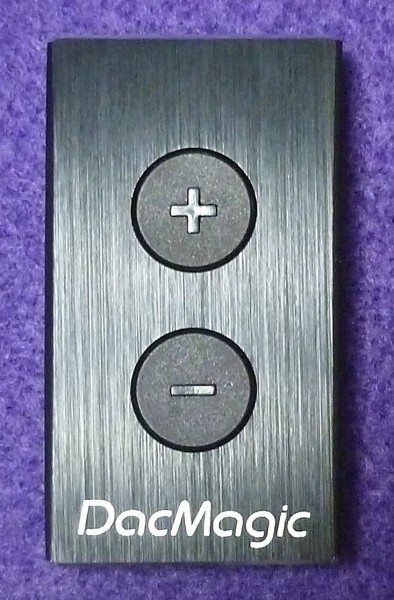
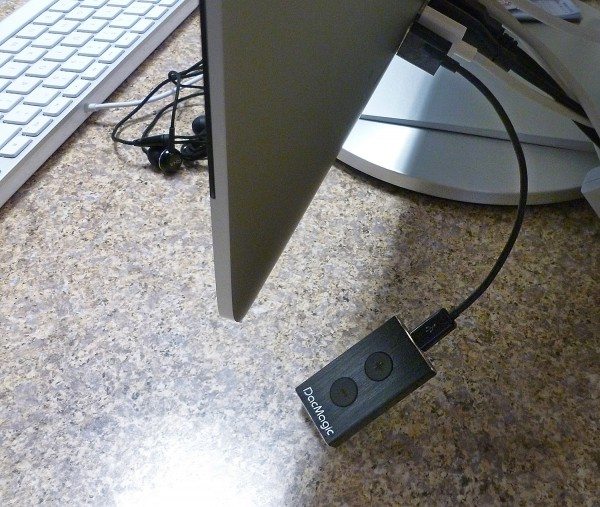
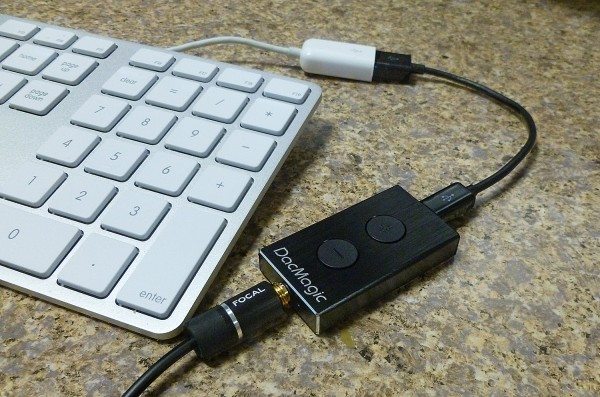
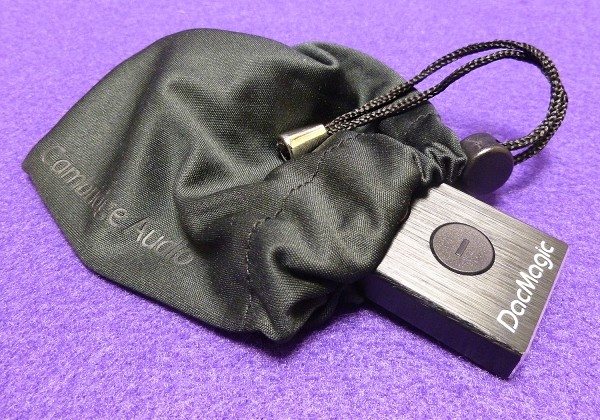


Gadgeteer Comment Policy - Please read before commenting
Thanks for a good article on DACs. I did my research and settled on the Dragonfly 1.2 – whatever DAC someone gets, it makes a major improvement – that said, you really need very good to excellent headphones to hear the difference. I would say that the $400 price point is a good transition point from good to very good headphones as a heuristic. I listen to my DAC via B&W P7s and Sennheiser HD650s. Earbuds, Beats, and other cheap headphones will not really benefit from a good DAC. And, I would recommend using Lossless content – no MP3s. Even Apple’s AAC’s don’t really sound all that good. Moving to Beats Music, Spotify (at 320Kbs) or using FLAC or AIFF file formats are really where a DAC and great headphones make a significant difference. Until Apple announces high end audio (probably very soon) HDTracks is a good place to get high quality music. The rumor is that Apple will provide Lossless high quality audio at a premium of $1 per song and let users upgrade their current lower quality iTunes purchases to lossless at a $1 per song. And, I understand that Apple will begin to ship a DAC based headphone solution that connects via Lighting instead of the 3.5 min connection that leverages Apple’s typically cheap DACs.
Just my two cents
Very good points, David.
Thanks for adding these.
Since I belong to the Apple borg, I’m anxious to see where Apple is headed with audio. I am hoping that the iPhone 6 will support high-res audio formats and will be available in 128GB.
Bill H.
I haven’t heard anything about a better DAC in the iPhone Air (the 4.7 inch) or in the iPhone Pro (5.5 inch). What I am hearing is leveraging the Lighting Connector and bypassing the internal cheap DAC. Apple may sell its own BEATS DAC adaptor and even DAC equipped BEATS headphones (an oxymoron). Whatever they do, I know that higher quality audio for Music and much higher quality for Video / AppleTV is a major focus – via Conducted BEATS solutions. I expect the new AppleTV to support at least Dolby Digital Plus and hopefully lossless DTS-HD and / or Dolby Digital HD. Amazon Fire TV and Roku support Dolby Digital Plus and this is a marked improvement over standard Dolby Digital. FYI
Bill, very well done!
One of the things I try to tell people when talking about good audio sound (at least the older people), is the difference between AM and FM radio. Now, if you already have “good” sound, it will cost a bit to get “great” sound. BTW, my computer is now directly hooked to a “receiver”.
I work at Shure Inc., and right after I got the job (as a present for myself) I pick up the last HD based iPod, and at first was using the “free” headphones that came with it. Shortly after that, I picked up a pair of Shure’s SE530’s (not for full price). That really was just like switching from AM radio to FM radio!!!! Heck, at the time, even Shure’s SE110s sounded much better than those “free” ones!
Also, if you are getting lossless Audio, direct from the CD or other direct source, you should not be post processing the sound as you are just taking great sound and distorting it! 😉
Another thing, most “pop” music is pre-mixed to sound the same when using modern compressing codec, so please don’t compare pop lossless to pop mp3/aac. 😉
Thanks for the comments, David.
I’m not sure what you mean by “post-processing.” If you mean an external DAC, then it doesn’t apply because every digital signal needs a DAC somewhere in the chain. An external DAC totally replaces the internal one in a computer – bypasses it completely. They are much better than the stock DAC on a sound card. If that’s not what you mean, then I’ve misunderstood you.
Don’t get me started on compression. It’s killing music.
My first pair of earphones were a Shure SE210. I bought them for a long plane trip and was floored. I couldn’t believe what I was hearing. I eventually gave them to my son, who uses them every day.
I reviewed the SE535 two years ago.
http://the-gadgeteer.com/2011/02/12/shure-se535-earphones-review/
Bill H.
Do you know if this dac has any issues with static electricity? I had a Fiio e10 that would kill itself and appeared to be super sensitive even causing more static electricity. I have a garbage-y earforce dss amplifier right now because the Fiio eventually died because I kept getting static shocked via the headphones on dry days. The cheaper, poorer sound quality DSS unit didn’t have these problems.
Is this the same device developed by HMS, or HAL, who died Nov 2011??
“post-processing” as in BEATS or cranking the bass or treble over 3db (even that normally too much). Treble and bass adjustment should be only used to correct issues with the hardware used to reproduce the sounds, or if you have hearing issues. If I use FLAC or a CD, I run my equalizer with just a little high end boost, as I’m loosing that part of my hearing. (getting old, use to hear when any TV was on, by the 15Khz HV/sync circuit)
I wish I could get Shure to send Julie some of our consumer stuff. I know it’s mostly very high end, but I feel like it would help!
Tony,
I live in Florida, so static shocks are not an issue in our humid climate. I haven’t read anything about any static issues.
Bill H.
David,
I agree with your post-processing comment. I generally stay clear of my equalizer or at least set it to “flat” setting. Of course, it all depends on the recording.
Modern music and some “re-mastered” albums tend to boost the bass – not good. Many of them are even brick-walled. Sometimes I compare the frequencies of an original song and the newer remastered version. Some of the differences are scary. People don’t know what they are missing.
If you ever have any luck with Shure, I would love to listen and review their earphones and headphones. Educating people about what alternatives are available is important.
Bill H.